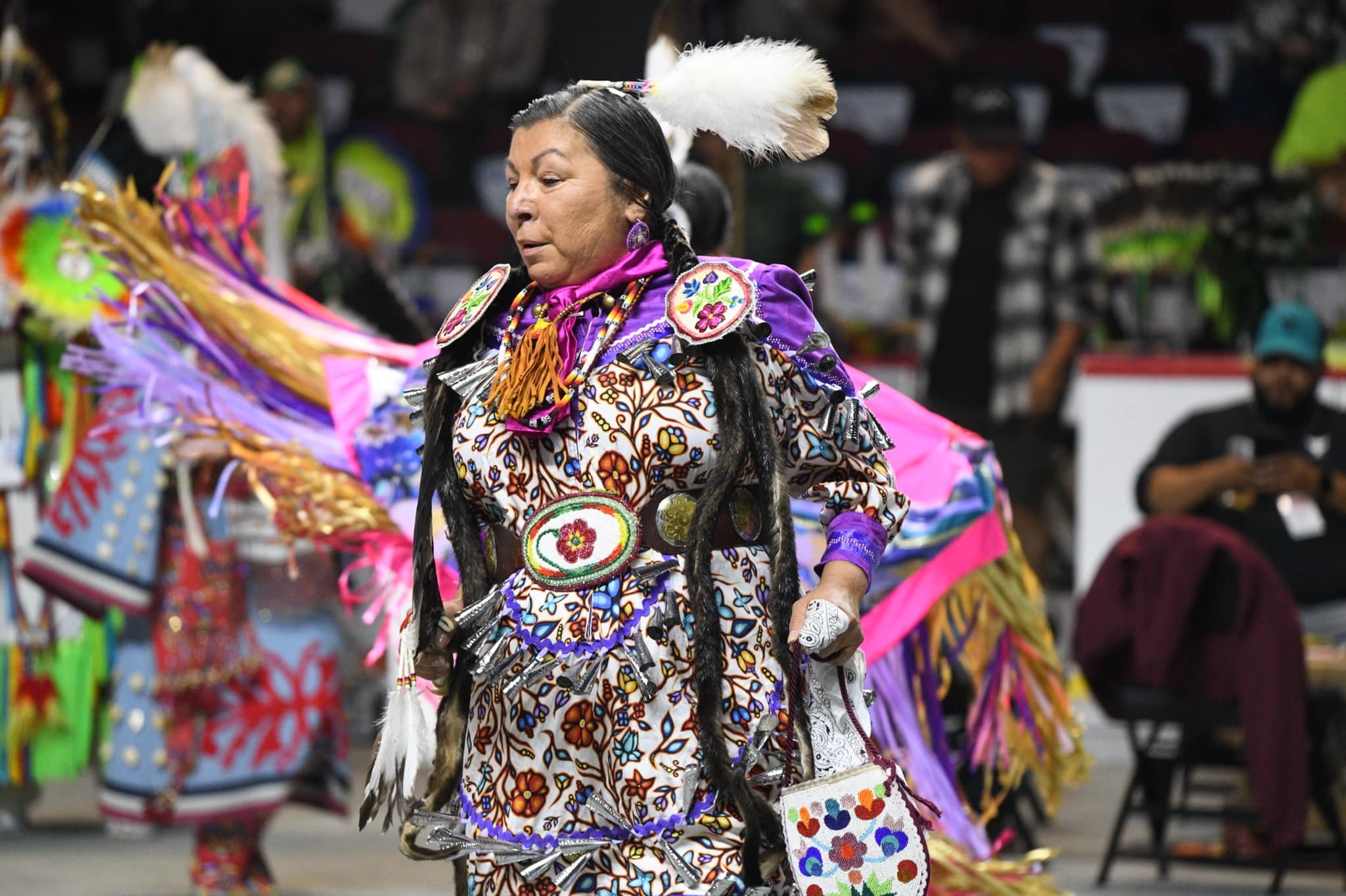Decolonizing
Rhythm
The following is a compilation of excerpts from the book: “Powwow: A Celebration Through Song and Dance”
Even after everything they had been through at Indian residential school, my mom and dad had instilled in us pride in being Indigenous, in being Anishinaabe. It wasn’t easy living off the reserve, though, with our brown skin. I felt sad when I was teased and bullied for being “Indian.” We just did what we were supposed to do—work or go to school—and kept silent. But when we went home to the reserve for the summer, I would get to dance, play and just be myself, without keeping silent. Powwow time was the time to celebrate our identity. Being around powwow dance always made me feel beautiful
Every culture has ways of marking important events like births and deaths, marriages and changes of season. Indigenous Peoples celebrated these occasions with specific songs and dances—at least, they did until these cultural practices were made illegal. In both Canada and the United States, European settlers gained political control over Indigenous Peoples and their lands by creating new ways of living and governing.
In Canada, the Indian Act came into force in 1876. Its purpose was assimilation. Among other things, it defined who was an Indian, where Indians could live and what they could and couldn’t do. It banned essential ceremonies like the Potlatch and the Sun Dance. The Indian Act has changed over the years, but it is still in place today.
In the United States, where the government had been trying hard to stop Native Americans from dancing since the 1880s, many tribes by the early 1900s were beginning to fight the government for control of their dances. And with many Native American men joining the army to fight for the United States in both the First and Second World Wars, the government realized it couldn’t stop Native Americans from doing Sun Dances to pray for their men.
Powwows arose out of North American tribal nations resisting colonial policies, laws and institutions, starting in the late 1800s, and refusing to abandon their cultural traditions. Today the powwow is a place where both Indigenous and non-Indigenous people can come together in peace and harmony to celebrate tradition—and, for some, a place where they can be introduced to Indigenous cultural knowledge.
When I was a child attending the powwow on my home reserve of Wiikwemkoong, being in the powwow circle lifted my spirit and made me feel beautiful. When the men sang around the drum, I could feel the power and energy move throughout my body. It felt like a blessing. Today I am grateful; the drum songs still make me feel beautiful.


